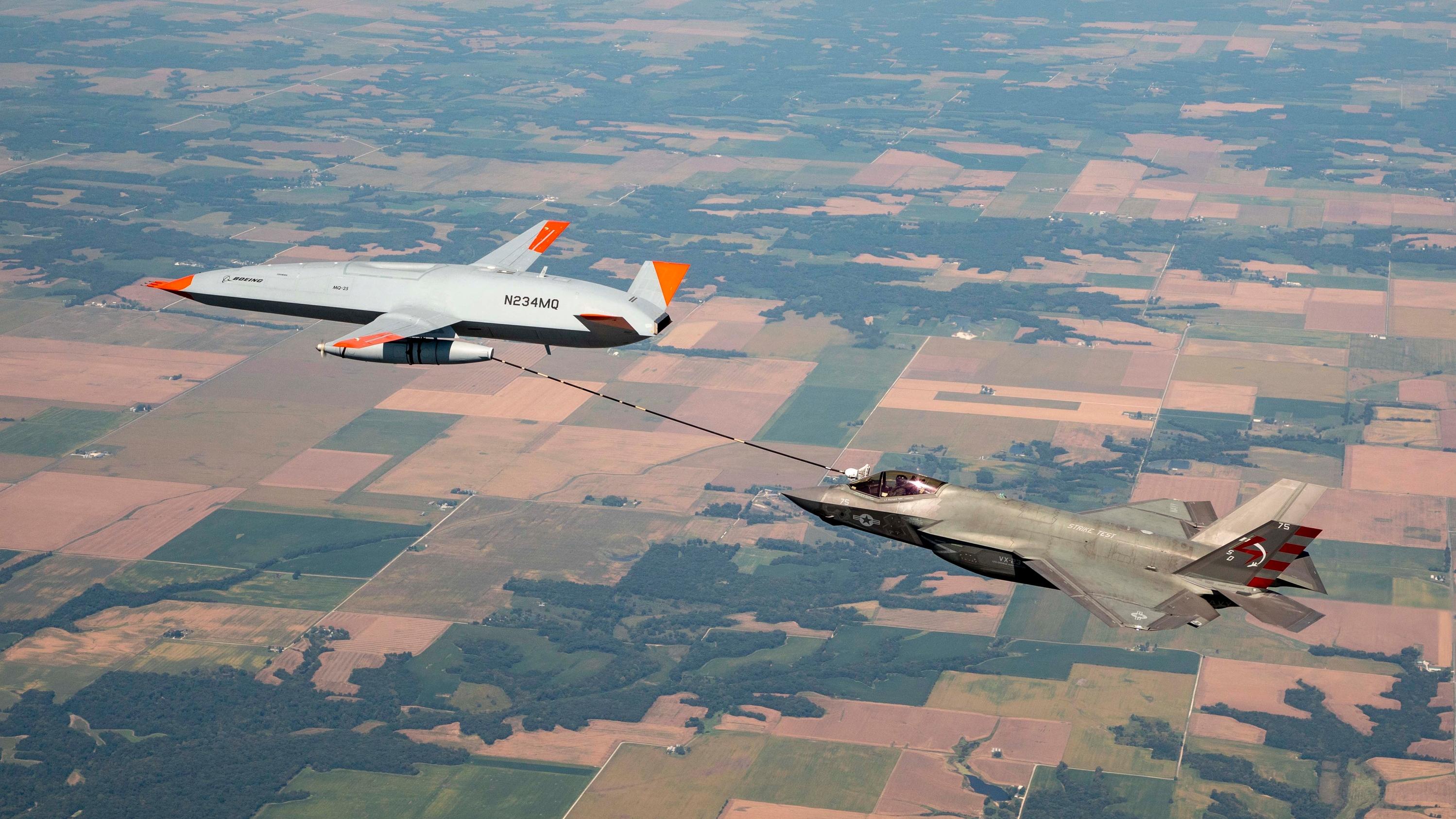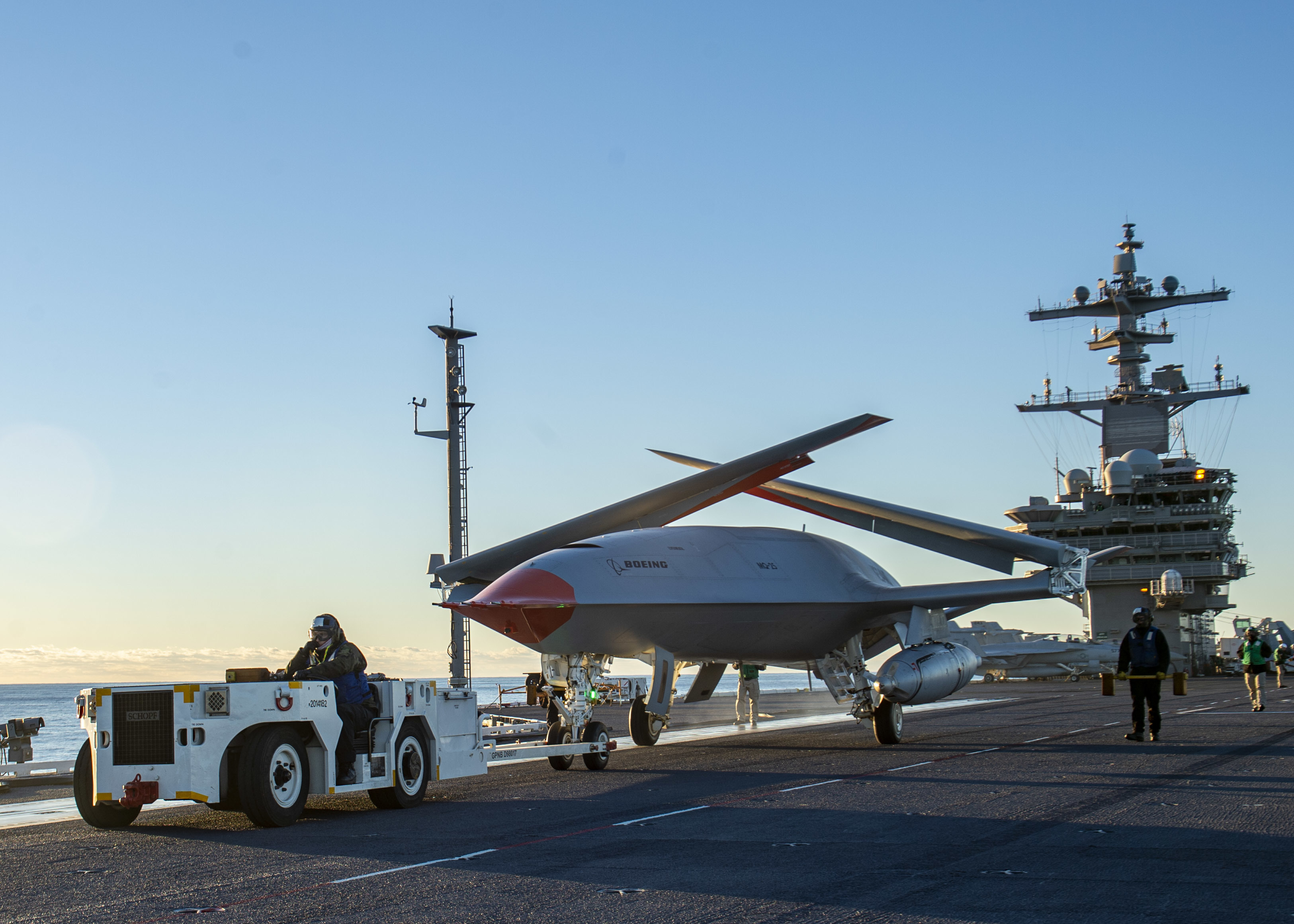
ANNAPOLIS, Md. – Several new unmanned aerial vehicles are under development as part of the Navy’s air wing of the future concept in addition to the unmanned aerial tanker set to deploy in 2026, Navy officials said on Wednesday.
The new aircraft are being designed to meet growing requirements for range for carrier air wings, Rear Adm. Andrew Loiselle, the Navy’s air warfare director (OPNAV N98) ,said during a naval aviation panel at the Naval Institute, co-hosted by the Center for Strategic and International Studies.
“As we go to the air wing of the future, we will be operating at ranges off of the aircraft carrier that vastly exceed what we’re doing today,” Loiselle said.
“In order to do that the unmanned portfolio really needs to be part of that system, because it’s the easiest way for us to keep a normally sized aircraft, but then have all of that extra space for fuel that gets us the range that we require to be able to get out there.”
With the F-35C Lighting II Joint Strike Fighter, the current air wing has an effective combat range of about 700 nautical miles from the carrier, USNI News previously reported. Prior to the F-35C inclusion on the carrier, the service relied on F/A-18E/F Super Hornets for strike and air-to-air missions with even shorter ranges.
In order to be effective in the vast distances in the increasingly dangerous Western Pacific, aircraft would notionally have to operate more than 1,000 nautical miles from the carrier to keep out of range of Chinese anti-ship ballistic missiles like the DF-21 and DF-26, analyst Bryan Clark told USNI News in 2020.
The next step for the Navy is to bring an unmanned aerial refueling aircraft to operate further from the carrier to extend the range of the existing airwing. The first operational MQ-25A Stingray aerial refueling UAVs are set to deploy aboard USS Theodore Roosevelt (CVN-73) by 2026, Vice Adm. Kevin Whitesell said in April.
Carrying 15,000 pounds of gas up to 500 nautical miles from the carrier, the Stingrays would take over the tanking mission from the existing fleet of F/A-18F Super Hornets.
“We have the MQ-25, which is first envisioned as a tanker. And so that’s its primary role in its initial instantiation, Loiselle said.
“And there are several other things under development right now that I’m very excited about.”
MQ-25A was initially conceived as a more capable unmanned aircraft as part of the Unmanned Carrier Launched Airborne Surveillance and Strike (UCLASS) program that was pared back to the unmanned carrier tanker.
“MQ-25 is capable of significantly more than we are asking it to do at [initial operational capability]. So at IOC, it needs to be able to operate around an aircraft carrier and be able to conduct aerial refueling and that’s as far as we went,” Loiselle told USNI News in December.
“The rest of it will be spiral developed because it’s got significant additional capabilities with a mission bay… we plan to take use of in the future.”

As for new aircraft, he did not elaborate on the UAVs in the works. The Navy has kept mum on its research and development efforts into almost all of its new carrier air wing aircraft.
The Navy has classified the spending for the Next Generation Air Dominance (NGAD) program that is expected to produce a manned fighter to replace the Super Hornets in the 2030s.
Loiselle did define three categories of unmanned aircraft his office is considering.
“The first set is something that can go into a hostile environment, high threat environment, and it can stay there, it can persist in a high threat environment. The second set is something that can go to that high threat environment, perform a given mission, briefly – a strike mission –and then leave and have a very high chance of coming home,” he said.
“The last set is something that is at an attritable price point, a much smaller vehicle that might perform any number of different missions. Anything from going out there with our fighter aircraft and carrying more air-to-air missiles… or we might someday integrate that type of thing into our electronic warfare, a distributed architecture that would conduct that mission. And then we might also use those same types of drones for a distributed command and control network.”
The UAVs aren’t part of the NGAD (pronounced En-JAD by the Navy, Loiselle said) program but would be part of the ongoing development of the fighter.
“They are not exclusively for that platform. Okay, there’s equal applicability in the manned-unmanned teaming concept for any small [UAS] to be used with any aircraft on our flight deck. It’s not limited to that one capability,” he said.
Loiselle spoke just days after the ninth anniversary of the July 10, 2013 landing of X-47B Salty Dog 502 aboard carrier USS George H.W. Bush (CVN-77) – the first arrested landing of an unmanned aircraft on an aircraft carrier.





